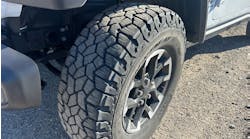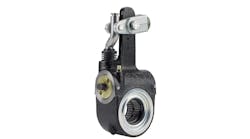CVSA’s Brake Safety Week scheduled for Aug. 20-26
The Commercial Vehicle Safety Alliance (CVSA) has scheduled this year’s Brake Safety Week for Aug. 20-26 with a focus on brake lining/pad violations.
“The focus of this year’s Brake Safety Week is on the condition of the brake lining and pad,” said CVSA President Maj. Chris Nordloh with the Texas Department of Public Safety. “Brake lining and pad issues may result in vehicle violations and could affect a motor carrier’s safety rating.”
During Brake Safety Week, CVSA-certified inspectors conduct their usual inspections but pay special attention to brake system components, removing commercial motor vehicles found to have brake-related out-of-service violations until those violations are corrected. They will then report the brake-related inspections and violation data to the Alliance, who will publish a press release with the results in fall 2023.
Read more: Visual guide to commercial truck brake wearWhen inspectors conduct the brake portion of a Level I or Level V Inspection, they will:
- Check for missing, non-functioning, loose, or cracked parts.
- Check for contaminated, worn, cracked and missing linings or pads.
- Check for S-cam flipover.
- Listen for audible air leaks around brake components and lines.
- Check that slack adjusters are the same length (from center of S-cam to center of clevis pin) and the air chambers on each axle are the same size.
- Ensure the brake system maintains air pressure between 90-100 psi (620-690 kPa) and measure pushrod travel.
- Inspect for non-manufactured holes (e.g., rust holes, holes created by rubbing or friction, etc.) and broken springs in the spring brake housing section of the parking brake.
- Inspect required brake system warning devices, such as anti-lock braking system (ABS) malfunction lamp(s) and low air-pressure warning devices.
- Inspect the tractor protection system, including the bleedback system on the trailer.
- Ensure the breakaway system is operable on the trailer.
This transparency aims to remind drivers and motor carriers to take proactive steps to ensure their commercial motor vehicles are safe and compliant with Federal Motor Carrier Safety Regulations. Improperly installed or poorly maintained brake systems can reduce the braking capacity and stopping distance of trucks or buses, which poses a serious safety risk.




